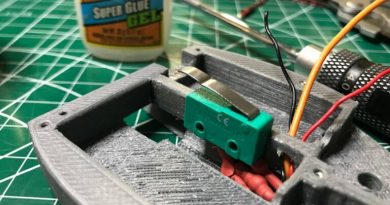Soldering Tip Care Tips
It is normal for soldering iron tips to gradually erode during normal use, but certain steps can slow down erosion. Keeping the tips clean and not exceeding the necessary temperature setting can significantly extend the lifespan of your soldering iron tips.
With the introduction of lead-free solder and their associated fluxes, the erosion process has become a bigger problem than in the past. Because of the cost of replacing tips, the accelerated tip erosion associated with lead-free solder increases the cost of owning a soldering station.
The trick is to improve soldering performance while reducing the average and maximum temperatures of the soldering iron tips.
Lead-Free Soldering
The are two main erosion mechanisms associated with lead-free solder. First there is the tin, which is a more reactive metal than the iron of the soldering iron tip. Tin is used extensively in lead-free solder, so this higher reactivity causes the iron on your tip to degrade faster. Second, the fluxes found in lead-free solder are more aggressive than the flux used in ordinary SnPb alloys. The net result is accelerated tip erosion.
Since alloys used in lead-free formulations melt at a higher temperature than traditional SnPb alloys, users are tempted to increase the tip temperature to speed up the formation of the solder joint. The common belief is that the higher solder melting temperature associated with lead-free solder ( typically 180°C to 217°C) requires a higher temperature setting. However, this is not entirely true.
The optimal temperature range for formation of a lead-free solder joint is much narrower than when using SnPb solder, but the upper limit of the temperature ranges are essentially the same. Heating the lead-free solder joint beyond that upper limit creates potential device failure and can also cause pad delamination on the PCB.
Excessive tip temperature provides a powerful catalyst for chemical reactions that accelerate tip erosion. In addition, turning up the tip temperature tends to burn any flux present on the tip, reducing heat transfer. This burning has two consequences that act to reduce the life of the tip. First, the user tends to apply excessive pressure to make up for the reduced heat transfer, increasing the likelihood of tip damage. Second, the user tends to clean the tip more aggressively and frequently, which also contributes to erosion of the tip’s iron plating.
Countermeasures
Keeping the soldering iron tip well-tinned will help mitigate the erosion caused by the chemical action of the flux (but not the high tin content of lead-free solder). Manufacturers could apply a thicker plating to the copper core of tips to extend tip life, but that results in undesirable side effects including a reduction of heat conductivity from the copper core to the soldering point, resulting in reduced productivity. Also, thicker platings require larger tip sizes that are not compatible with modern fine pitch, close component spacing and small pad sizes.
Temperature Regulation and Recovery
Another solution is improving tip temperature regulation. It is imperative that the recovery time be as short as possible while minimizing overshoot. Most soldering station irons have a ceramic heater embedded in the main body of the soldering wand with a temperature sensor located between the element and the tip. When the sensor detects a drop in tip temperature, it sends power to the element and rapidly recovers the tip to it’s optimum temperature.
Some lead-free soldering station designs incorporate tips with the ceramic heater integrated into and with direct contact to the tip section to maximize the recovery time. This allows the user to successfully acquire a lead-free solder joint without exceeding the normal temperature required (720°F/380°C).
Tip degradation will always be a problem. Reduce the rate of degradation by avoiding temperature settings above the required range. Keep your tips well-tinned to protect against alloy reaction and reduce the temperature of your tip when you are not actively soldering.

